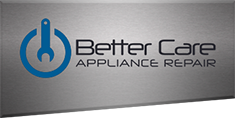The phrase “you learn something new every day” is applicable to everyone – even seasoned home cooks. This is because cooks aren’t exempt from learning a thing or two in the kitchen. There are certainly some things that some people don’t know about, especially around what NOT to put in the oven.
If you’re ever doubtful about including something in the oven other than food, then here’s some information to help clear your mind.
Wax Paper
Given its association with baking, you might be surprised to learn that wax paper is not an oven-safe material. The heat of your oven can melt the wax coating from the paper, leaving it prone to catching fire. Accordingly, you should never line your baking sheets or cake pans with wax paper; save it for food packaging purposes instead.
Other Paper Products
As a general rule, paper does not belong in the oven. This is because (as most are likely aware), paper is incredibly flammable. If a paper product comes into contact with the oven’s heating elements, it will combust; and even if the paper does not directly touch a heating element, the high temperature alone can set it aflame. This applies to cardboard as well. Source: Southern Living
Plastic Containers or Utensils
Plastic melts quickly at high temperatures, creating a sticky, toxic mess in your oven and releasing harmful fumes. Even plastic items labeled as “heat-resistant” have limits and shouldn’t be exposed to oven-level heat.
Non-Oven-Safe Glassware
Not all glassware is oven-friendly. Ordinary glass dishes and mixing bowls can shatter when exposed to sudden temperature changes or prolonged heat, creating a hazardous mess. Only use glassware that is clearly marked as “oven-safe.” Source: QueenCity Homestore
Frozen Foods That Need Thawing
Frozen thick cuts of protein, like chicken or steak, need to be thawed before they are placed in the oven. If they aren’t properly thawed beforehand, you risk uneven cooking and possibly even leaving a frozen center. Spending hours working on your highly seasoned steak only to have it ruined by an uneven middle is something that can easily be avoided.
You can thaw in multiple, different ways. It’s important to keep your meat below a certain temperature zone because if left out for longer periods, you risk harmful bacterial growth. The best way is to leave the frozen meat in the fridge, but that can take a couple of days. For a faster thaw, submerge an air-tight package under cold water, replacing the water frequently. You can place something heavy on top to keep it submerged. Source: Tom’s Guide
We hope that this information has given you assurance on which material is not allowed inside your oven. If you need more help like this, or you’re looking for someone to repair your oven or any other appliance, then our professionals are always ready to attend to your needs. Get in touch with us today!
